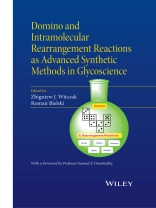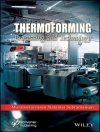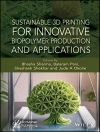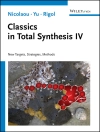The book consists of a brief introduction, a foreward provided by professor Danishefsky of Columbia University, and about 14 – 16 chapters, each written by one or two eminent scholars/authors describing their recent research in the area of either domino reactions or intramolecular rearrangements in carbohydrate chemistry. Three or four chapters will be reviews. The domino (cascade, tandem) reactions are always intramolecular. They are usually very fast, clean and offer highly complex structures in a one pot process. Intramolecular rearrangements offer very similar advantages and often lead to highly complex products as well. Although many recently isolated carbohydrates fulfill various sophisticated functions, their structures are often very complex. The editors cover the broadest scope of novel methodologies possible. All the synthetic and application aspects of domino/cascade reactions are explored in this book. A second theme that will be covered is intramolecular rearrangement, which is also fast, stereoselective, and often constitutes one or more steps of domino / cascade process. Selected examples of intramolecular rearrangements are presented. Together, both processes offer an elegant and convenient approach to the synthesis of many complex molecules, which are normally difficult to synthesize via alternative routes. It appears that domino and intramolecular rearrangements are ideally suited to synthesize certain specific modified monosaccharides. What is particularly important is that both processes are intermolecular and almost always yield products with very well-defined stereochemistry. This high definition is absolutely crucial when synthesizing advanced, modified mono and oligosaccharides. The choice of contributors reflects an emphasis on both therapeutic and pharmacological aspects of carbohydrate chemistry.
Зміст
Foreword xiii
Preface xv
Acknowledgments xix
List of Contributors xxi
Abbreviations xxv
1 Introduction to Asymmetric Domino Reactions 1
Hélène Pellissier
1.1 Introduction, 1
1.2 Asymmetric Domino Reactions using Chiral Carbohydrate Derivatives, 3
1.2.1 Stereocontrolled Domino Reactions of Chiral Carbohydrate Derivatives, 3
1.2.2 Enantioselective Domino Reactions Catalyzed by Chiral Carbohydrate Derivatives, 8
1.3 Conclusions, 12
References, 13
2 Organocatalyzed Cascade Reaction in Carbohydrate Chemistry 16
Benjamin Voigt and Rainer Mahrwald
2.1 Introduction, 16
2.2 C-Glycosides, 17
2.3 Amine-Catalyzed Knoevenagel-Additions, 20
2.4 Multicomponent Reactions, 32
2.5 Amine-Catalyzed Cascade Reactions of Ketoses with 1, 3-Dicarbonyl Compounds, 40
2.6 Conclusions, 44
References, 44
3 Reductive Ring-Opening in Domino Reactions of Carbohydrates 49
Raquel G. Soengas, Sara M. Tomé, and Artur M. S. Silva
3.1 Introduction, 49
3.2 Bernet–Vasella Reaction, 50
3.2.1 Domino Reductive Fragmentation/Reductive Amination, 51
3.2.2 Domino Reductive Fragmentation/Barbier-Type Allylation, 52
3.2.3 Domino Reductive Fragmentation/Barbier-Type Propargylation, 57
3.2.4 Domino Reductive Fragmentation/Vinylation, 59
3.2.5 Domino Reductive Fragmentation/Alkylation, 60
3.2.6 Domino Reductive Fragmentation/Olefination, 61
3.2.7 Domino Reductive Fragmentation/Nitromethylation, 62
3.3 Reductive Ring Contraction, 64
3.3.1 Ring Opening/Ketyl-Olefin Annulation, 65
3.3.2 Ring Opening/Intramolecular Carbonyl Alkylation, 69
3.4 Conclusions, 73
References, 73
4 Domino Reactions Toward Carbohydrate Frameworks for Applications Across Biology and Medicine 76
Vasco Cachatra and Amélia P. Rauter
4.1 Introduction, 76
4.2 Domino Reactions Toward Butenolides Fused to Six-Membered Ring Sugars and Thio Sugars, 77
4.3 Exploratory Chemistry for Amino Sugars’ Domino Reactions, 80
4.4 Domino Reactions Toward Sugar Ring Contraction, 84
4.4.1 Pyrano–Furano Ring Contraction, 84
4.4.2 Ring Contraction of Furans to Oxetanes, 87
4.5 Macrocyclic Bislactone Synthesis via Domino Reaction, 91
4.6 Sugar Deoxygenation by Domino Reaction, 92
4.7 Conclusions, 94
References, 94
5 Multistep Transformations of BIS-Thioenol Ether-Containing Chiral Building Blocks: New Avenues in Glycochemistry 97
Daniele D’Alonzo, Giovanni Palumbo, and Annalisa Guaragna
5.1 Introduction, 97
5.2 (5, 6-Dihydro-1, 4-dithiin-2-yl)Methanol: Not Simply a Homologating Agent, 98
5.3 Sulfur-Assisted Multistep Processes and Their Use in the De Novo Synthesis of Glycostructures, 101
5.3.1 Three Steps in One Process: Double Approach to 4-Deoxy l-(and d-)-Hexoses, 101
5.3.2 Five Steps in One Process: The Domino Way to l-Hexoses (and Their Derivatives), 102
5.3.3 Up to Six Steps in One Process: 4′-Substituted Nucleoside Synthesis, 105
5.3.4 Eight Steps in One Process: Beyond Achmatowicz Rearrangement, 109
5.4 Concluding Remarks, 111
5.5 Acknowledgments, 111
References, 111
6 Thio-Click and Domino Approach to Carbohydrate Heterocycles 114
Zbigniew J. Witczak and Roman Bielski
6.1 Introduction, 114
6.2 Classification and Reaction Mechanism, 114
6.3 Conclusions, 119
References, 120
7 Convertible Isocyanides: Application in Small Molecule Synthesis, Carbohydrate Synthesis, and Drug Discovery 121
Soumava Santra, Tonja Andreana, Jean-Paul Bourgault, and Peter R. Andreana
7.1 Introduction, 121
7.2 Convertible Isocyanides, 125
7.2.1 CIC Employed in the Ugi Reaction, 125
7.2.2 Resin-Bound CICs, 167
7.2.3 CIC Employed in the Ugi–Smile Reaction, 172
7.2.4 CIC Employed in the Joulli´e–Ugi Reaction, 172
7.2.5 CIC Employed in the Passerini Reaction, 175
7.2.6 CIC Employed in the Groebke–Blackburn–Bienaym´e Reaction, 178
7.2.7 CIC Employed in the Diels–Alder Reaction, 182
7.2.8 Monosaccharide Isocyanides Employed in the Ugi and Passerini Reaction, 183
7.2.9 Methyl isocyanide in the Preparation of the Hydroxy DKP Thaxtomin A, 186
7.3 Conclusions, 187
References, 187
8 Adding Additional Rings to the Carbohydrate Core: Access via (SPIRO) Annulation Domino Processes 195
Daniel B. Werz
8.1 Introduction, 195
8.2 Spiroketals via a Domino Oxidation/Rearrangement Sequence, 196
8.3 Chromans and Isochromans via Domino Carbopalladation/Carbopalladation/Cyclization Sequence, 200
References, 208
9 Introduction to Rearrangement Reactions in Carbohydrate Chemistry 209
Zbigniew J. Witczak and Roman Bielski
9.1 Introduction, 209
9.2 Classification, 210
9.3 Chapman Rearrangement, 211
9.4 Hofmann Rearrangement, 211
9.5 Cope Rearrangement, 211
9.6 Ferrier Rearrangement, 212
9.7 Claisen Rearrangement, 213
9.8 Overman Rearrangement, 214
9.9 Baeyer–Villiger Rearrangement, 215
9.10 Ring Contraction, 215
9.11 Conclusions, 216
References, 217
10 Rearrangement of a Carbohydrate Backbone Discovered “En Route” to Higher-Carbon Sugars 219
S?awomir Jarosz, Anna Osuch-Kwiatkowska, Agnieszka Gajewska, and Maciej Cieplak
10.1 Introduction, 219
10.2 Rearrangements Without Changing the Sugar Skeleton, 220
10.3 Rearrangements Connected with the Change of Sugar Unit(s), 221
10.4 Rearrangements Changing the Structure of a Sugar Skeleton, 224
10.5 Rearrangement of the Sugar Skeleton Discovered En Route to Higher-Carbon Sugars, 226
10.5.1 Synthesis of Higher-Carbon Sugars by the Wittig-Type Methodology, 226
10.5.2 The Acetylene/Vinyltin Methodology in the Synthesis of HCS, 227
10.5.3 The Allyltin Methodology in the Synthesis of HCS, 227
10.5.4 Rearrangement of the Structure of HCS, 230
10.5.5 Synthesis of Polyhydroxylated Carbocyclic Derivatives with Large Rings, 235
10.6 Conclusions, 237
Acknowledgments, 237
References, 237
11 Novel Levoglucosenone Derivatives 240
Roman Bielski and Zbigniew J. Witczak
11.1 Introduction, 240
11.2 Additions to the Double Bond of the Enone System Leading to the Formation of New Rings, 241
11.3 Reductions of the Carbonyl Group Followed by Various Reactions of the Formed Alcohol, 241
11.4 Functionalization of the Carbonyl Group by Forming Carbon-Nitrogen Double Bonds (Oximes, Enamines, Hydrazines), 242
11.5 Additions (But Not Cycloadditions) (Particularly Michael Additions) to the Double Bond of the Enone, 243
11.6 Enzymatic Reactions of Levoglucosenone, 244
11.7 High-Tonnage Products from Levoglucosenone, 244
11.7.1 Overman and Allylic Xanthate Rearrangement, 245
11.8 Conclusions, 246
References, 247
12 The Preparation and Reactions of 3, 6-Anhydro-d-Glycals 248
Vikram Basava, Emi Hanawa, and Cecilia H. Marzabadi
12.1 Introduction, 248
12.2 Preparation of 3, 6-Anhydro-d-Glucal Under Reductive Conditions, 250
12.3 Addition Reactions of 3, 6-Anhydro-d-Glucal, 251
12.4 Preparation of 6-O-Tosyl-d-Galactal and Reduction with Lithium Aluminum Hydride, 252
12.5 Conclusions, 254
References, 254
13 Ring Expansion Methodologies of Pyranosides to Septanosides and Structures of Septanosides 256
Supriya Dey, N. Vijaya Ganesh, and N. Jayaraman
13.1 Introduction, 256
13.2 Synthesis of Septanosides, 258
13.2.1 Synthesis of Septanosides via Hemiacetal Formation, 258
13.2.2 Knoevenagel Condensation, 260
13.2.3 Baeyer–Villiger Oxidation of Cyclohexanone Derivatives, 260
13.2.4 Electrophile-Induced Cyclization, 260
13.2.5 Metal-Catalyzed Cyclization, 261
13.2.6 Nicolas–Ferrier Rearrangements, 262
13.2.7 Ring Opening of Carbohydrate-Derived Cyclopropanes, 263
13.2.8 Ring Opening of Glycal-Derived 1, 2-Cyclopropane, 263
13.2.9 Ring Opening of Oxyglycal Derived 1, 2-Cyclopropane, 265
13.2.10 Functionalization of Oxepines, 268
13.3 Structure and Conformation of Septanosides, 269
13.3.1 Solid-State Structures and Conformations, 270
13.3.2 Solution-Phase Conformations, 273
13.4 Conclusions, 275
Acknowledgments, 276
References, 276
14 Rearrangements in Carbohydrate Templates to the Way to Peptide-Scaffold Hybrids and Functionalized Heterocycles 279
Bernardo Herrad´on, Irene de Miguel, and Enrique Mann
14.1 Introduction, 279
14.2 Synthesis of the Chiral Building Blocks: Applications of the Claisen–Johnson and Overman Rearrangements, 280
14.3 Peptide–Scaffold Hybrids, 282
14.4 Sequential Reactions for the Synthesis of Polyannular Heterocycles, 284
14.5 The First Total Synthesis of Amphorogynine C, 284
Acknowledgments, 293
References, 293
15 Palladium- and Nickel-Catalyzed Stereoselective Synthesis of Glycosyl Trichloroacetamides and Their Conversion to ????- and ????-Urea Glycosides 297
Nathaniel H. Park, Eric T. Sletten, Matthew J. Mc Kay, and Hien M. Nguyen
15.1 Introduction, 297
15.2 Development of the Palladium(II)-Catalyzed Glycal Trichloroacetimidate Rearrangement, 300
15.3 Stereoselective Synthesis of Glycosyl Ureas from Glycal Trichloroacetimidates, 307
15.4 Development of the Stereoselective Nickel-Catalyzed Transformation of Glycosyl Trichloroacetimidates to Trichloroacetamides, 310
15.5 Transformation of Glycosyl Trichloroacetimidates into α- and β-Urea Glycosides, 317
15.6 Mechanistic Studies on the Nickel-Catalyzed Transformation of Glycosyl Trichloracetimidates, 317
15.7 Conclusions, 323
References, 323
Index 325
Про автора
Zbigniew J. Witczak obtained his Ph.D. from Medical University of Lodz, Faculty of Pharmacy (Poland). After postdoctoral work at Purdue University, he worked in industry (A. E.Staley), then joined the faculty of the School of Pharmacy at University of Connecticut. He moved to Wilkes University, Nesbitt School of Pharmacy in 2000, where he is Full Professor. He has published over ninety research papers and holds six patents in the fields of carbohydrate medicinal and biological chemistry. In 2000 he was awarded the Melville L. Wolfrom Award of the ACS Division of Carbohydrate Chemistry. His research interests are in the area of carbohydrate Synthons including Levoglucosenone and L-Arabinose as template for carbohydrate based therapeutics.
Roman Bielski obtained his Ph.D. at the Institute of Organic Chemistry, Polish Academy of Sciences. He is currently a Senior Scientist in Value Recovery, Inc., a partner in Cheminnolab, LLC, and adjunct professor at Wilkes University. Recently he (with M. Tencer) developed a method of enantiomers’ resolution requiring no use of chiral compounds. His research interests are origin of homochirality, modification of carbohydrates, solutions to environmental issues and sustainability. He published over three dozen papers and co-authored 18 patents.












